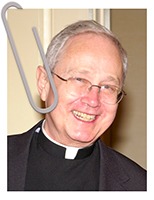A good number of readers of Vincentian Mindwalk either witnessed or were participants as children in appropriate costumes and props re-enacted the Nativity scene. As adults we grew beyond these re-enactments.
A letter from Pope Francis wrote prompts me re-think such live re-enactments today. I think we need to move from simple re-enactments to recognizing and owning how we, without awareness, re-enact the scene in our lives throughout the year.
Nativity Scenes – a story lived in our lives
He wrote about the deep meaning and significance of the tradition of nativity scenes or creches.
Dear brothers and sisters, the Christmas crèche is part of the precious yet demanding process of passing on the faith. Beginning in childhood, and at every stage of our lives… it teaches us to believe that God is with us and that we are with him, his children, brothers, and sisters all.
The cast of characters…
Pope Francis then reviews the various elements of the story and presents a deeper meaning.
- “The Magi teach us that people can come to Christ by a very long route.”
- “The presence of the poor and the lowly in the nativity scene remind us that Word became flesh for the sake of those who feel most in need of his love and who ask him to draw near to them”
- “As we contemplate the lowly shepherds and the angels we are called to reflect on the responsibility of every Christian to spread the Gospel. Each of us is called to bear glad tidings to all, testifying by our practical works of mercy to the joy of knowing Jesus and his love.”
- “Children – but adults too! – often love to add to the nativity scene other figures that have no apparent connection with the Gospel accounts. Yet, each in its own way, these fanciful additions show that in the new world inaugurated by Jesus there is room for whatever is truly human and for all God’s creatures [See Vatican display of 100 creches from around the world. Also Nativity scenes in local culture]
A call for personal growth – a story for adults!
All this hit me at the right time. Late in life, I have come to realize the power of the scriptures when I see myself as having been at some time in my life each of the persons in so many biblical stories.
Pope Francis, in the second chapter of Laudato Si, reminds us that we each have lived the parable of the Good Samaritan. We know what it is like to be the wounded traveler hoping someone will stop. At times we have lived as the two believers who pretended they did not see their neighbor’s needs and passed by. And then there are the times when we have been the Good Samaritan who not only sees the need, offers immediate assistance, but also provides for longer-term relief.
Suddenly, I realized that I needed to enter into and see myself as each of the people and elements in the nativity scene. I missed the point of being
- the nobody shepherd, who tells the story,
- the innkeeper who kept Jesus at a comfortable distance and even at times shutting the doors of my heart,
- a Herod who has not recognized the body of Christ in those he allowed to be slaughtered by not advocating for them.’
I now see every aspect of the nativity scene as a challenge to see some aspect of myself and use that knowledge to grow as a Christian.
Reviewing some part of my life each day…
- Which character did I resemble?
- Who would I have like to be?


Thanks for including those extra characters (Herod and the innkeeper) who never make it into anyone’s creche. You omitted another innkeeper (from your Good Samaritan reference) – he’s another powerful character who deserves another look, one we might end up emulating.
The King James Version of Luke’s account says that the shepherds were “abiding” in the fields. That term has taken on a different nuance akin to “chillin” in today’s culture, but other translators have rendered the situation more accurately as “residing” or “lodging” in the fields. Their inability to interact with townspeople and regularly attend synagogue services really made them “nobody shepherds,” as you called them.
For many years, I viewed myself as one of those “nobody” persons. Then, after marriage and parenthood, I saw myself more as Joseph, the provider and caretaker. But now, I think I have become the manger (or the stable itself) – providing an opportunity where all those great things (with all their mysterious interactions) can come together and take shape.
This has truly been an eye-opening Advent. May we continue to be blessed.
God in a manger challenges me about being attached to what impedes the mission that we all be one.